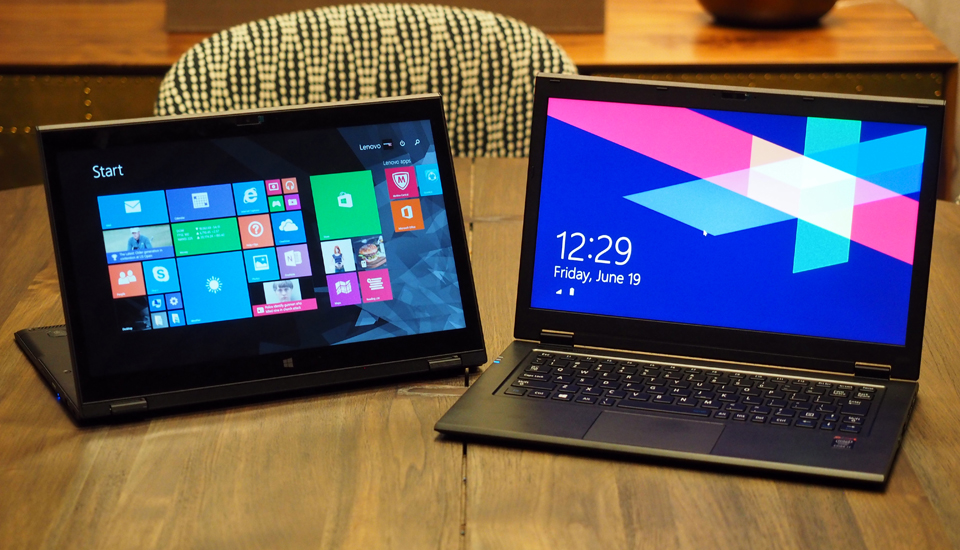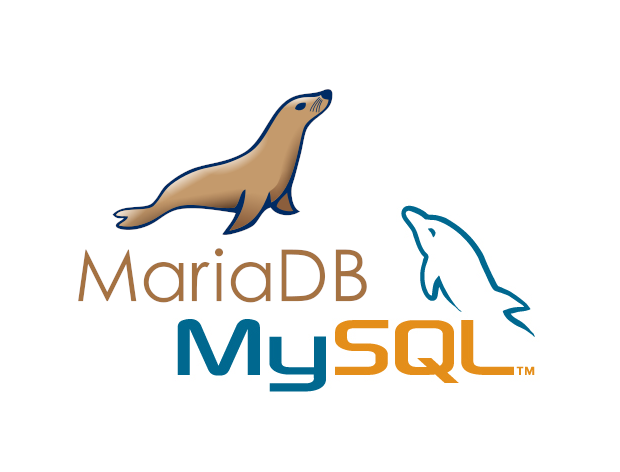The Lenovo LaVie Z series is a winner. Or at least it was before I tested one for this review. The HZ550, as it was originally called, captured our attention at CES for being the lightest-ever 13-inch laptop: just 1.7 pounds. Its sibling, the touchscreen HZ750, wasn’t much heavier at 2.04 pounds. In either case, Lenovo promised surprisingly robust performance, with the help of full-fledged Intel Core CPUs (i.e., not the sort of watered-down chips we typically see in thin-and-light machines). The combination of portability and processing clout was enough to win the LaVie series a Best of CES Award in the PC category, beating out some stiff competition. While I don’t regret my decision — the LaVie was, after all, one of the more memorable products we saw at CES — I don’t think you should actually spend $1,399-plus on it. Here’s why.
LaVie Z
PROS
- Lightest 13-inch laptop
- Doesn’t compromise on performance
- Battery life matches heavier, supposedly lower-powered machines
- Touchpad works well
CONS
- The US edition has a Japanese keyboard layout with lots of shrunken buttons
- Build quality feels a bit flimsy
- Display suffers from washout
LaVie Z 360
PROS
- Lightest convertible 13-inch laptop
- Doesn’t compromise on performance
- Touchpad works well
CONS
- The US edition has a Japanese keyboard layout with lots of shrunken buttons
- Battery life is short compared to other thin-and-light touchscreen PCs
- Build quality feels a bit flimsy
- Display suffers from washout
Hardware
Before I get into the nuts and bolts (or ports and slots, as it were), it’s worth talking a bit about the LaVie Z series’ history. These laptops are actually the product of a joint venturebetween Lenovo and Japanese PC maker NEC, which has been selling super thin laptopsfor years under the LaVie brand. The LaVie’s Japanese origins will actually be incredibly important once I get to the strange keyboard layout, but for now, suffice it to say that while the LaVie Z is a novelty here in America, NEC already knows a thing or two about building exceptionally thin-and-light machines.
The LaVie Z (once called the HZ550) and the convertible LaVie 360 (formerly the HZ750) are virtually indistinguishable with their lids closed. Both are made of a magnesium-lithium composite that’s so lightweight, it could easily be mistaken for plastic. That’s partly because of its nondescript black finish, but also because the build quality is about on par with what I’d expect from a plastic machine. Pick it up by the palm rest, for instance, and you’ll notice a good deal of flexing and bending. For what it’s worth, at least, the hinge is sturdy, particularly on the convertible model where smooth, controlled movements are of the essence. That said, by no means do I think lightweight machines have to feel this flimsy; the new two-pound MacBook and its aluminum enclosure are proof that you can build a featherweight machine that still feels solid.
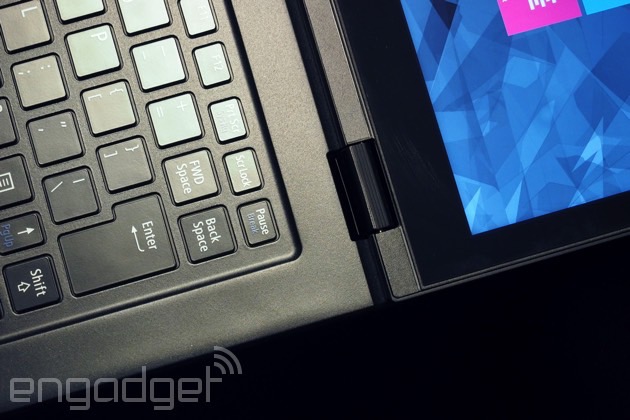
Whatever the LaVie Z lacks in style or rock-solidness, these were all compromises made for the sake of keeping the weight down. And these machines are indeed very lightweight. The touchscreen Z 360 weighs 2.04 pounds, as promised, while the non-touch Z is slightly heavier than originally announced: 1.87 pounds instead of 1.72. Even so, both are significantly lighter than their competitors. The 13-inch MacBook Air, for instance, comes in at 2.96 pounds, and that’s without a touchscreen; the LaVie Z beats it by more than a pound. As for the Z 360, it’s competing against touchscreen machines even like Lenovo’s own Yoga 3 Pro, which weighs 2.62 pounds — and has a lower-powered processor, to boot.
Lenovo didn’t skimp on screen resolution either: Both of the units I tested had Quad HD (2,560 x 1,440) 13.3-inch displays, the likes of which are quickly becoming standard on high-end notebooks. However, while the pixel count is everything you’d demand from a premium machine, the actual quality is a bit lacking in both cases. Though the Z 360’s touchscreen looks vibrant head-on, its colors start to lose their luster as soon as you dip the screen forward, as you might if you were working in a cramped coach seat. The non-touch Z, which has a matte-finish screen, is also prone to washout, although some customers will at least appreciate how glare-resistant that panel is, especially compared to the glossy display on the Z 360.

The selection of ports is nearly identical for the Z and touchscreen Z 360. On the left side, you’ll find a Kensington lock slot, along with the power connector. There you’ll also see the power button, along with a trio of indicator lights. Over on the right edge, meanwhile, are two USB 3.0 ports, along with a full-size HDMI socket, a full-size SD card reader and a headphone jack. The only difference is that the convertible Z 360 also has a volume rocker on the left side, for when the machine is in tablet mode.
Keyboard and trackpad
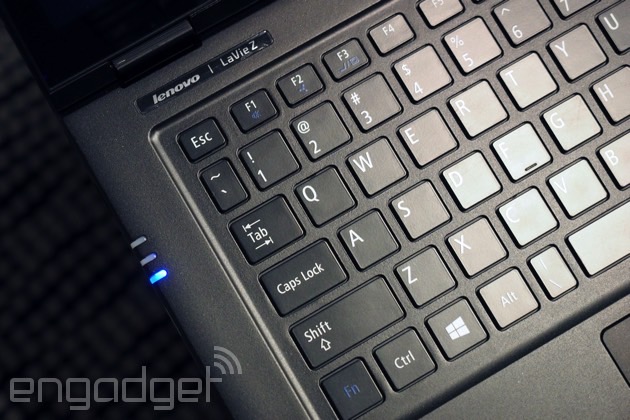
The LaVie’s Z keyboard makes me wonder if Lenovo initially wasn’t planning to release it in the States. Though the buttons do, at least, have English characters, the layout will seem completely unintuitive to American users: Almost every major key, including Caps Lock, Tab, Ctrl, Backspace and even the spacebar, has been shrunken down. In some cases, like with Ctrl and Backspace, the buttons aren’t much bigger than my thumbnail. It doesn’t help that the Backspace key is tucked off to the upper-right corner, with the lesser-used “FWD Space” button standing in between me and the rest of the keyboard. That meant my finger often landed where it wasn’t supposed to when all I was trying to do was correct a typo.
Indeed, you might have to correct typos fairly often: Because the keyboard is so flat (as is the case on most ultraportables), the buttons don’t offer much travel, which means key presses don’t always register unless you hit them very deliberately. To be fair, this is an issue with many other thin-and-light machines, although Lenovo, at least, is otherwise known for its relatively cushy keys — even on machines that don’t fall under the famous ThinkPad brand.
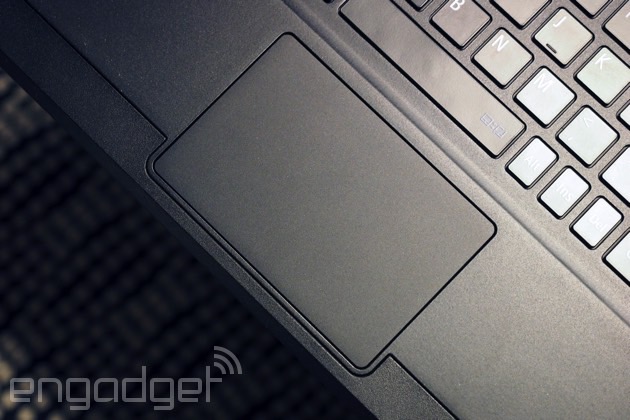
Fortunately, the touchpad on both machines works well, with precise single-finger tracking and controlled multitouch gestures like two-finger scrolling. This was a particular relief on the non-touch model, where I frequently had to, say, swipe in from the right to expose the Charms Bar. The touchpad is the only touch-sensitive input device on the classic version, so it’s a good thing it works as well as it does.
Performance and battery life
| PCMARK7 | 3DMARK06 | 3DMARK11 | ATTO (TOP DISK SPEEDS) | |
|---|---|---|---|---|
| Lenovo LaVie Z (2.4GHz Intel Core i7-5500U, Intel HD 5500) | 5,232 | 7,384 | E2,001/ P1,122 / X310 | 555 MB/s (reads); 245 MB/s (writes) |
| Lenovo LaVie Z 360 (2.4GHz Intel Core i7-5500U, Intel HD 5500) | 5,125 | 6,918 | E2,043 / P1,138 / X316 | 554 MB/s (reads); 247 MB/s (writes) |
| ASUS Transformer Book T300 Chi (1.2GHz Intel M-5Y71, Intel HD 5300) | 4,494 | 5,236 | E1,362 / P737 / X214 | 487 MB/s (reads); 366 MB/s (writes) |
| HP Spectre x360 (2015, 2.2GHz Intel Core i5-5200U, Intel HD 5500) | 4,965 | 8,810 | E1,667 / P932 / X265 | 555 MB/s (reads); 270 MB/s (writes) |
| Dell XPS 13 (2015, 2.2GHz Intel Core i5-5200U, Intel HD 5500) | 4,900 | 7,433 | E2,114 / P1,199 / X330 | 515 MB/s (reads); 455 MB/s (writes) |
| Lenovo Yoga 3 Pro (1.1GHz Intel M-5Y70, Intel HD 5300) | 4,699 | 4,734 | E1,076 / P595 / X175 | 554 MB/s (reads); 261 MB/s (writes) |
| Samsung ATIV Book 9 2014 Edition(1.6GHz Core i5-4200U, Intel HD 4400) | 4,835 | 5,947 | E1,752 / P948 / X297 | 551 MB/s (reads); 141 MB/s (writes) |
| Microsoft Surface Pro 3 (1.9GHz Core i5-4300U, Intel HD 4400) | 5,024 | 5,053 | E1,313 / P984 | 555 MB/s (reads); 252 MB/s (writes) |
| Samsung ATIV Book 9 Plus (1.6GHz Core i5-4200U, Intel HD 4400) | 4,973 | 5,611 | E1,675 / P867 / X277 | 547 MB/s (reads); 508 MB/s (writes) |
| Acer Aspire S7-392 (1.6GHz Intel Core i5-4200U, Intel HD 4400) | 5,108 | 5,158 | E1,724 / P952 / X298 | 975 MB/s (reads); 1.1 GB/s (writes) |
Both of the units I tested came with 2.4GHz Intel Core i7-5500U CPUs, along with integrated Intel HD 5500 graphics and 8GB of RAM. They also each had Samsung-made 256GB solid-state drives. The comparison I’m about to make might not be a fair one, seeing as how few of the ultraportables we test have Core i7 processors (though maybe that’s the point). Suffice to say, the full-voltage CPU here beats the pants off of Intel’s low-powered Core M chip and, to a lesser extent, Core i5 models. In PCMark7, for instance, I saw scores that were 200-300 points higher than Core i5, and 500-600 points higher than Core M.
The machine even saw a modest boost on graphics tests, despite having the same integrated Intel HD 5500 chipset as many of its competitors. In the newest version of 3DMark, the two laptops scored a combined average of 712 on the most difficult test, and an average of 2,644 on the “Sky Diver” benchmark for mid-range machines. Once we start running these tests on more Windows PCs, we’ll be in a better position to compare results across different systems.
One area where the LaVie Z series doesn’t enjoy an advantage is disk speeds. Though the Samsung-made solid-state drives used inside both machines reached impressive read speeds of about 555 MB/s, with writes topping out around 246 MB/s, we’ve seen just as good, if not faster, rates from competing machines. Likewise, the two LaVies’ startup times ranged from seven to nine seconds, which is also fast, but on par with other ultraportables.
| BATTERY LIFE | |
|---|---|
| Lenovo LaVie Z | 7:32 |
| Lenovo LaVie Z 360 | 6:54 |
| MacBook Air (13-inch, 2013) | 12:51 |
| HP Spectre x360 | 11:34 |
| Apple MacBook Pro with Retina display (13-inch, 2015) | 11:23 |
| Apple MacBook Pro with Retina display (13-inch, late 2013) | 11:18 |
| Chromebook Pixel (2015) | 10:01 |
| Microsoft Surface 3 | 9:11 |
| Samsung ATIV Book 9 Plus | 8:44 |
| Apple MacBook (2015) | 7:47 |
| Dell XPS 13 (2015) | 7:36 |
| Lenovo Yoga 3 Pro | 7:36 |
| Acer Aspire S7-392 | 7:33 |
| Microsoft Surface Pro 3 | 7:08 |
| ASUS Transformer Book T300 Chi | 5:51 (Quad HD)/6:14 (Full HD) |
The competition
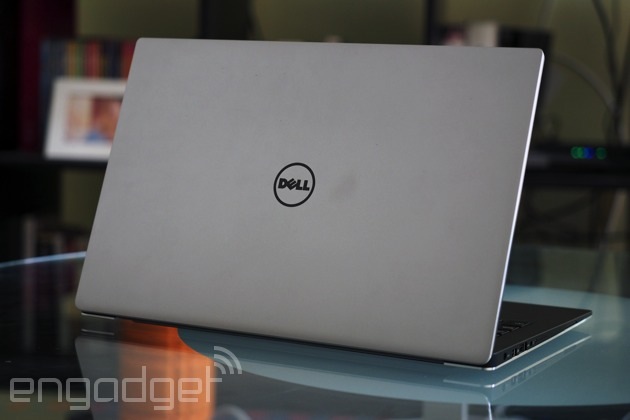
The LaVie Z might be the lightest 13-inch laptop on the market, while the LaVie Z 360 might be the lightest touchscreen 13-incher, but that, of course, doesn’t mean they’re competitors are heavy. Not by any means. If you can tolerate the burden of an extra pound (or less, even), you’ll find you have a few solid options. Not all of them are as fast as the LaVie Z — in fact, most aren’t — but many have better displays, and virtually all of them have superior keyboards.
To begin, you might consider Dell’s XPS 13 ($800 and up), which very nearly won the Best PC award at CES this year instead of the LaVie Z. Clocking in at 2.6 pounds for the lightest model, it lasted about as long in our standard battery test, except that was with a higher-res 3,200 x 1,800 touchscreen; I suspect the base model with a non-touch 1080p panel can go much longer. At the same time, it packs standard-voltage processors, similar to the LaVie Z, and its keyboard is way more comfortable to type on. I would recommend it over the Lenovo for just about everybody.
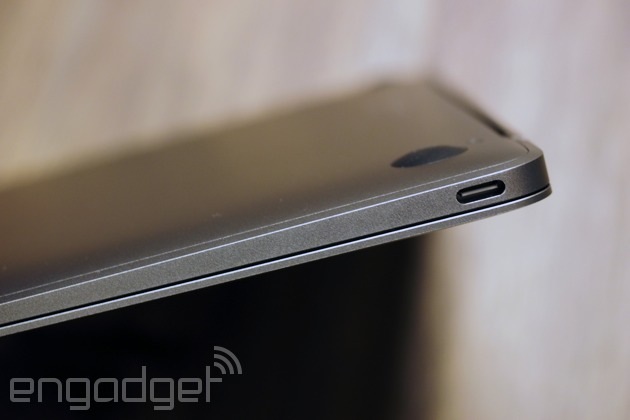
The new MacBook is another obvious competitor. At two pounds, it’s only slightly heavier than the LaVie Z, but its build quality is much sturdier, thanks to a unibody aluminum chassis. The keyboard, though flat, is easier to type on than the Z’s, and the Retina display offers wider viewing angles. That said, the choice here isn’t nearly as cut-and-dried as with the XPS 13. In exchange for better build quality, you get weaker performance and an enclosure that’s prone to overheating. Given the performance hit too, you’d at least expect the machine to be more energy efficient than its higher-powered rivals, but there doesn’t seem to be much a battery life advantage. Also, the new MacBook famously (notoriously?) includes just one port, a tiny USB Type-C socket that’s not yet compatible with many peripherals, at least not without an adapter. Taken on its own, I’m not sure it’s worth the $1,299 starting price — not unless you’re a loyal OS X user who puts display quality and portability above all else.

Many thin-and-light Windows laptops use the same low-powered Core M processor found in the new MacBook, and they present similar problems (namely, watered-down performance without a big gain in battery life). That said, these Windows models at least offer more ports than the MacBook, making them a generally more practical choice. These include Lenovo’s own Yoga 3 Pro convertible ($1,099 and up), which offers longer battery life than the similar LaVie Z 360, along with a comfier keyboard and a sharper display. Meanwhile, Samsung’s 12.2-inch ATIV Book 9 ($1,200-plus) weighs in at 2.09 pounds — nearly as light as the new MacBook and is rated for up to 10.5 hours of battery life, thanks in part to an aggressive battery-saving mode. I haven’t tested that one, though, so I can’t vouch for its performance.
Wrap-up
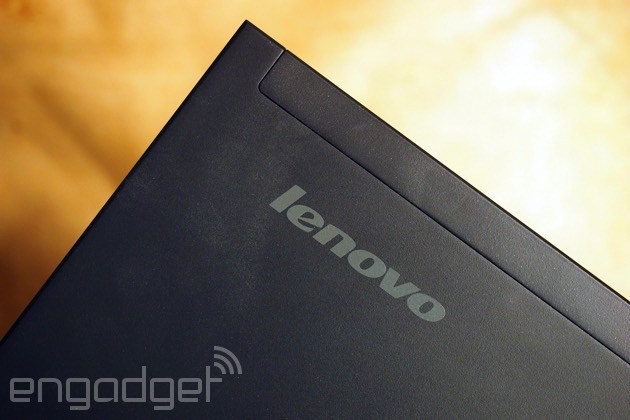
The LaVie Z was almost a great laptop, and will be — once Lenovo’s product team comes to its senses and re-releases the Z in the US with a keyboard layout optimized for American users. As it is, the company has achieved an impressively portable design, one that doesn’t compromise on speed or ports. Yes, the build quality doesn’t feel as sturdy as some rival machines, and the display, though usable, isn’t particularly vibrant. But both of these flaws would be tolerable if not for the fact that the US edition also suffers from a foreign keyboard layout. I can only assume that Lenovo and NEC settled for the Japanese setup because that’s what NEC knows, and because the two companies were under pressure to ship the laptop in time. But that won’t be an excuse next year and, indeed, I hope Lenovo tweaks the keyboard for American shoppers. If and when it does that, the LaVie Z will be a great notebook, maybe even one that raises the bar for the rest of the industry. Right now, though, it’s tough to recommend.
